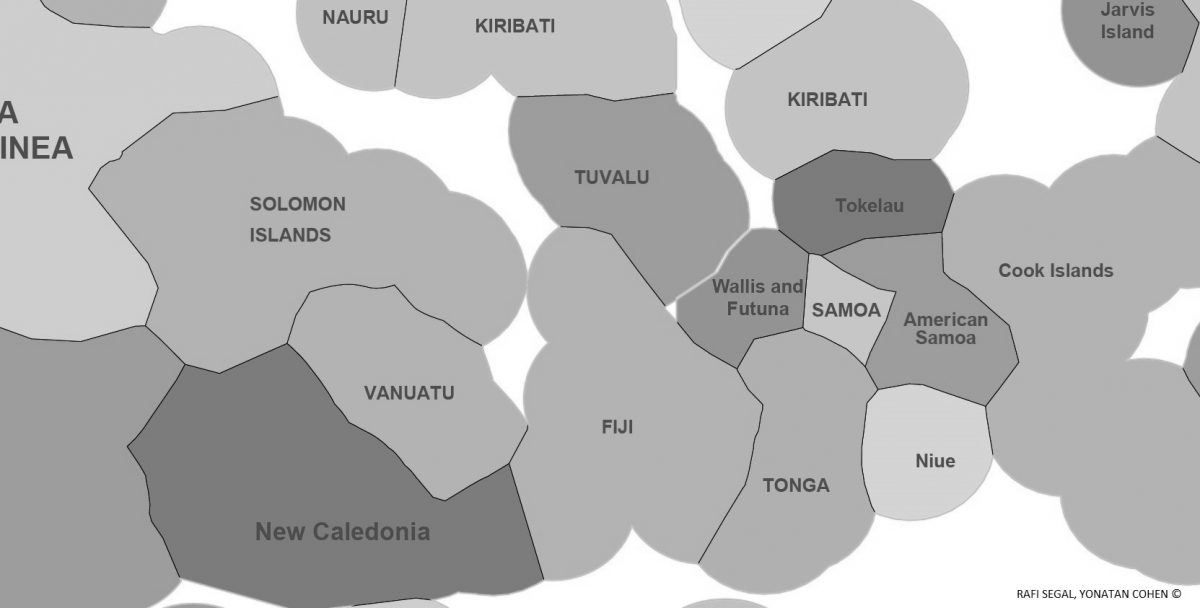Introduction
In our quest to understand the world around us, we often rely on mental models that shape our perceptions and guide our decision-making processes. One such model is the concept of Map-Territory Relations. Originating from philosopher Alfred Korzybski’s work, this mental model highlights the distinction between our mental representations (maps) and the objective reality (territory) they attempt to represent. In this blog post, we will explore the Map-Territory Relations model, its relevance in decision making, its anchoring in human psychology, and its prevalence in our daily lives.
Understanding Map-Territory Relations
Map-Territory Relations refers to the idea that our perceptions, beliefs, and mental models are not perfect replicas of the objective reality they aim to represent. Instead, they are subjective interpretations or “maps” that can never fully capture the complexity and intricacies of the actual “territory.” This mental model underscores the inherent limitations of our understanding and highlights the importance of recognizing the distinction between our mental constructs and the external reality they attempt to describe.
Relevance in Decision-Making Processes
The Map-Territory Relations model holds significant relevance in decision making, as it emphasizes the need for humility, open-mindedness, and a willingness to challenge our mental models. By recognizing that our maps are not the territory itself, we can avoid falling into the trap of mistaking our subjective perceptions for objective reality. This awareness can lead to more informed and rational decision making.
Anchoring in Human Psychology
Map-Territory Relations find their roots in human psychology, particularly in our cognitive biases and perceptual limitations. Our brains are wired to simplify complex information and construct mental models that make sense of the world. However, this simplification can lead to distortions, biases, and a tendency to confuse our mental representations with reality. This cognitive bias, known as the Map-Territory Fallacy, often influences our decision-making processes.
Examples of Map-Territory Relations
- Personal Life Decisions: Consider a person’s perception of their own abilities. They may have an inflated self-image (map) that does not align with their actual skills and capabilities (territory). By overestimating their abilities, they might pursue unrealistic goals or take on responsibilities they are ill-prepared for, leading to detrimental outcomes.
- Business Scenarios: In the business world, a company’s financial reports and projections serve as maps representing its performance and potential growth. However, these maps are not a perfect reflection of the company’s actual financial health and market conditions (territory). Investors who rely solely on the maps without critically examining the underlying reality may make ill-informed investment decisions.
- Public Policy-Making: When formulating public policies, policymakers often rely on economic models and forecasts that represent a simplified version of the complex social and economic realities (territory). By treating these models as a precise representation of the territory, policymakers may overlook nuances, unintended consequences, and societal complexities, leading to ineffective or detrimental policies.
Mental Biases Contributing to Map-Territory Relations
Several mental biases contribute to Map-Territory Relations and reinforce the tendency to confuse our maps with reality:
- Confirmation Bias: Our inclination to seek information that confirms our existing beliefs can lead to a reinforcement of our mental maps. This bias prevents us from critically examining alternative perspectives and considering contradictory evidence that may challenge our maps’ accuracy.
- Availability Heuristic: Our reliance on readily available information when making judgments can distort our perception of the territory. We tend to rely on vivid and easily accessible examples, anecdotes, or recent events (maps) instead of considering a broader range of data that accurately represents the territory.
- Overgeneralization: Our tendency to extrapolate limited information or experiences to represent broader patterns can result in oversimplifications and inaccurate maps. This bias leads us to make assumptions and judgments based on insufficient or biased evidence, which can hinder effective decision making.
Strategies to Mitigate Map-Territory Relations
- Embrace Cognitive Flexibility: Recognize that your mental models are subjective representations and be open to revising them when confronted with new evidence or alternative perspectives. Cultivate a mindset of curiosity and continuous learning to adapt your maps to align more closely with the territory.
- Seek Diverse Perspectives: Engage in dialogue with individuals who hold different viewpoints and experiences. By actively seeking out diverse perspectives, you can challenge your existing maps and gain a more comprehensive understanding of the territory.
- Verify and Validate: Actively seek objective data and evidence to validate your maps. Engage in critical thinking and fact-checking to ensure that your mental models are based on accurate and reliable information. Be wary of relying solely on anecdotal evidence or personal biases when forming judgments.
- Develop Systems Thinking: Embrace a holistic approach to decision making by considering the interconnectedness and complexity of the territory. Develop the ability to see the bigger picture, analyze the underlying systems, and anticipate the potential consequences of your decisions.
Conclusion
Map-Territory Relations serve as a powerful mental model that encourages us to recognize the limitations of our mental maps and the importance of distinguishing them from the objective reality they represent. By understanding this model’s implications, we can navigate decision-making processes more effectively, avoiding the pitfalls of cognitive biases and misconceptions. By embracing cognitive flexibility, seeking diverse perspectives, verifying information, and developing systems thinking, we can refine our mental maps and make more informed and rational decisions. Ultimately, awareness and active avoidance of the Map-Territory Fallacy can lead to better outcomes in our personal lives, businesses, and society as a whole.
